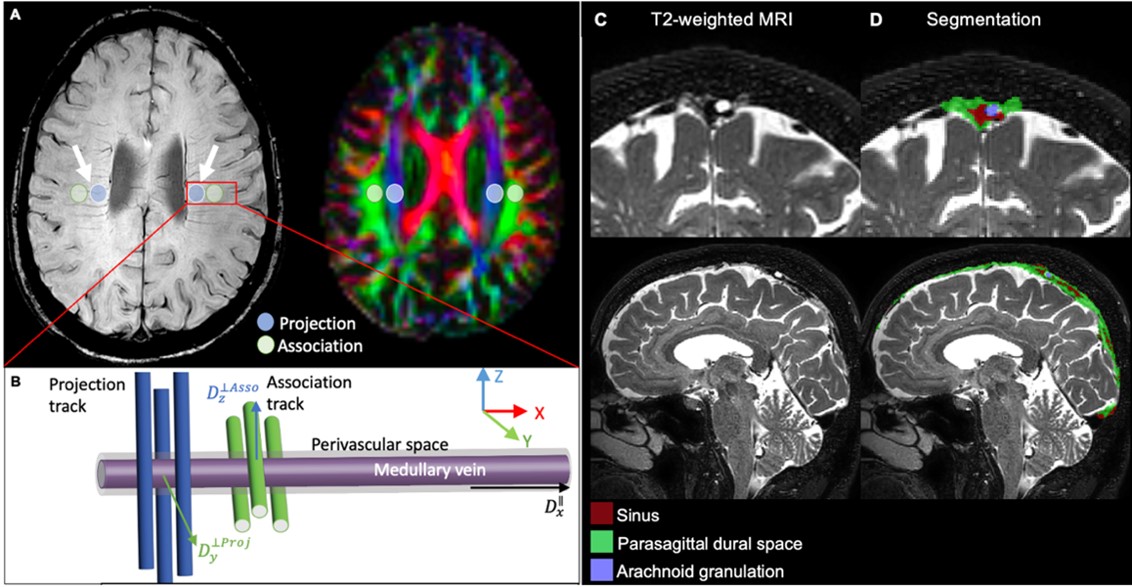Parkinson's
Effects of Exercise on Glymphatic Functioning and Neurobehavioral Correlates in Parkinson's Disease



Posted July 11, 2023
Daniel O. Claassen, M.D., M.S., Vanderbilt University Medical Center

Dr. Daniel O. Claassen
(Photo Provided)
Parkinson's disease (PD) is a progressive neurodegenerative disease (ND) caused by the deterioration of dopamine-producing cells in the brain leading to symptoms including tremors, muscle stiffness, and impaired balance and cognition.1 It remains unknown why these specific cells die, and there is no cure for PD. Current treatments focus on improving quality of life and managing PD symptoms rather than directly treating the disease-causing pathologic process. The glymphatic system is a recently discovered superhighway for clearing potentially harmful waste molecules from the central nervous system, particularly toxic protein species associated with NDs.2 Impairment to the glymphatic system has been identified after traumatic brain injury and in Alzheimer's disease and associated with disease progression and cognitive decline.2,3 However, it is less known how the glymphatic system is impaired in PD patients. The Neurotoxin Exposure Treatment Parkinson's (NETP) program awarded Dr. Daniel Claassen an Investigator-Initiated Research Award in fiscal year 2018 (FY18) to study the glymphatic system in PD patients and determine if aerobic exercise rescues glymphatic function and improves cognitive dysfunction. The U.S. Congress transitioned NETP in FY22 to the Parkinson's Research Program (PRP), which now manages this award.
Dr. Claassen and his team developed and optimized a unique, non-invasive magnetic resonance imaging (MRI) technique initially designed to assess peripheral blood and lymphatic dysfunction. They adapted this protocol to visualize the glymphatic system and evaluate glymphatic system dysfunction in ND patients. This technique, known as MRI Diffusion Tensor Imaging (DTI) - Along the Perivascular Space (ALPS), is able to quantify the movement of glymphatic fluid and measure markers of glymphatic function.
In a 2021 Parkinsonism Related Disorders article describing their PRP-funded work, Dr. Claassen and his team explained how they used MRI DTI-ALPS to analyze the glymphatic system of 181 participants: 144 PD patients and 37 patients with essential tremor (ET), a motor disorder not associated with a toxic protein species. These two groups were assessed to compare glymphatic function between patients with a movement disorder associated with toxic protein accumulation (PD) and without (ET). From the MRI DTI-ALPS images, the team measured glymphatic fluid movement in two directions to create a ratio, known as the ALPS-index score. ALPS-index scores are positively correlated with glymphatic function. Their results demonstrate lower ALPS-index scores for PD patients than for ET patients, indicating more glymphatic system dysfunction in PD patients relative to ET. Their work supports previous research that MRI DTI-ALPS is a useful tool to study the glymphatic system and highlights that changes in glymphatic system fluid flow
 Figure 1: Two methods investigated. A-B Diffusion tensor imaging along perivascular space (DTI-ALPS) use diffusion imaging to estimate the interstitial fluid movement around the medullary veins. C-D Dr. Claassen and his team developed a machine learning algorithm to estimate volume of parasagittal dural space (PSD), a structure involved in the egress of CSF.
Figure 1: Two methods investigated. A-B Diffusion tensor imaging along perivascular space (DTI-ALPS) use diffusion imaging to estimate the interstitial fluid movement around the medullary veins. C-D Dr. Claassen and his team developed a machine learning algorithm to estimate volume of parasagittal dural space (PSD), a structure involved in the egress of CSF.
Along with their published work, Dr. Claassen and his group are studying the effects of aerobic exercise on glymphatic system function and cognitive impairment in PD patients. Aerobic exercise has previously been shown to improve cognition in Alzheimer's disease patients through increased glymphatic function.4 The rationale for this study is to determine if exercise stimulates glymphatic function in PD patients and correlate improved glymphatic function with rescue of cognition. Dr. Claassen is currently recruiting PD patients, who will undergo MRI DTI-ALPS and positron emission tomography (PET) scans before and after a 16-week community exercise program. These scans will provide the data necessary to calculate the pre- and post-exercise ALPS-index scores, CSF flow, and amyloid burden, which will quantify the effects of exercise on glymphatic system function. Study subjects will also undergo neuropsychological evaluation before and after the exercise regimen to determine any effects on cognition. The results of the exercise study will be available in an anticipated peer-reviewed article.
Dr. Claassen's work studying the glymphatic system in PD patients provides significant insight into the mechanisms of PD pathogenesis. Their work moves the field forward by providing clear evidence of glymphatic system dysfunction in PD and a method to stimulate glymphatic function to mitigate cognitive impairment. The outcomes of this research will provide a framework for the development of novel PD treatments, both pharmacological and non-pharmacological, and could result in better health outcomes for our Veterans and civilians.
Publications:
McKnight CD, Trujillo P, Lopez AM, et al. 2021. Diffusion along perivascular spaces reveals evidence supportive of glymphatic function impairment in Parkinson disease. Parkinsonism Related Disorders 89:98-104. doi: 10.1016/j.parkreldis.2021.06.004
References:
1Institute on Aging. 2022 (Reviewed). Parkinson's disease: Causes, symptoms, and treatments. https://www.nia.nih.gov/health/parkinsons-disease
2Jessen NA, Munk AS, Lundgaard I, and Nedergaard, M. 2015. The glymphatic system - A beginner's guide. Neurochemical Research 40(12):2583-2599.
3Harrison IF, Ismail O, Machhada A, et al. 2020. Impaired glymphatic function and clearance of tau in an Alzheimer's disease model. Brain 143(8):2576-2593.
4Yin M, Pu T, Wang L, et al. 2018. Astroglial water channel aquaporin 4-mediated glymphatic clearance function: A determined factor for time-sensitive treatment of aerobic exercise in patients with Alzheimer's disease. Medical Hypothesis 119:0306-9877. doi: 10.1016/j.mehy.2018.07.016
Links:














